
Greenfield is a neighborhood in Pittsburgh, Pennsylvania, United States. It is represented on Pittsburgh City Council by Barb Warwick.
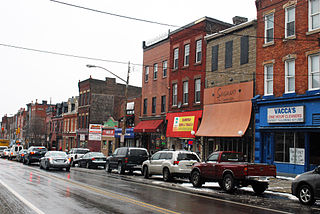
Bloomfield is a neighborhood in Pittsburgh, Pennsylvania. It is located three miles from the downtown area. Bloomfield is sometimes referred to as Pittsburgh's Little Italy because it was settled by Italians from the Abruzzi region and has been a center of Italian–American population. Pittsburgh architectural historian Franklin Toker has said that Bloomfield "is a feast, as rich to the eyes as the homemade tortellini and cannoli in its shop windows are to the stomach." Recently, the neighborhood has attracted young adults and college students as a "hip" neighborhood.
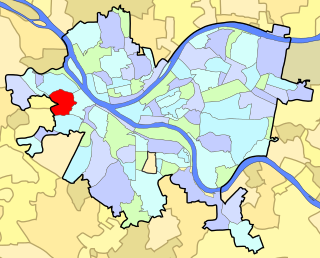
Crafton Heights is a neighborhood in the 28th Ward of the City of Pittsburgh.
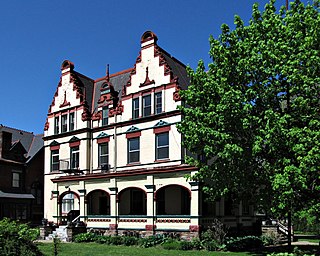
Highland Park is a neighborhood in the northeastern part of Pittsburgh, Pennsylvania. Highland Park, the neighborhood, fully encompasses the park with the same name.
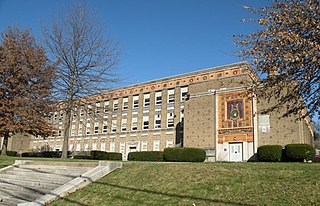
Lincoln–Lemington–Belmar is a neighborhood in Pittsburgh, Pennsylvania. It is located in the northeastern section of the city and spans the Allegheny River. Lincoln–Lemington–Belmar houses PBF 15 Engine, and is covered by PBP Zone 5 and the Bureau of EMS Medic 1.
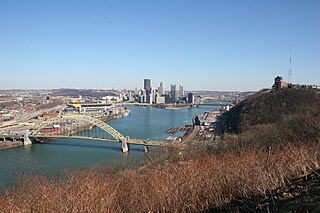
Elliott is a small, hilly neighborhood in Pittsburgh, Pennsylvania, United States' West End Region. Elliott is represented on the Pittsburgh City Council by the council member for District 2, and uses the ZIP code 15220.
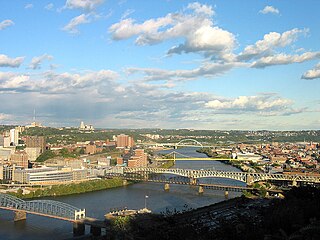
Uptown or The Bluff is a neighborhood in the city of Pittsburgh, Pennsylvania to the southeast of the city's Central Business District. It is bordered in the north by the Hill District and located across the Monongahela River from South Side. The predominant area zip code is 15219.

Brighton Heights is a neighborhood in Pittsburgh, Pennsylvania's northside area. It has a zip code of 15212, and has representation on Pittsburgh City Council by the council member for District 1. The Western gateway to the neighborhood, Brighton Heights Boulevard, is opposite the McKees Rocks Bridge and accessible via Route 65/Ohio River Boulevard. The Pittsburgh Bureau of Fire houses 35 Engine and 33 Truck in Brighton Heights.

Central Lawrenceville is a neighborhood in the northeast of Pittsburgh, Pennsylvania in the United States. It has a zip code of 15201, and has representation on Pittsburgh City Council by the council member for District 7. It is home to Allegheny Cemetery. Central Lawrenceville is the home of the Pittsburgh Bureau of Fire's 6 Engine and 6 Truck.
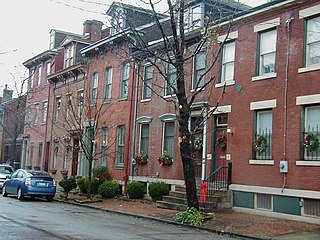
Central Northside is a neighborhood in the North Side of the city of Pittsburgh, Pennsylvania. It has a zip code of 15212, and has representation on Pittsburgh City Council by the council member for District 6. Originally known as "The Buena Vista Tract", it is densely filled with restored row houses, community gardens and tree lined streets and alleyways.

Duquesne Heights is a neighborhood in Pittsburgh, Pennsylvania's south city area. It has a zip code of 15211, and has representation on Pittsburgh City Council by the council member for District 2.
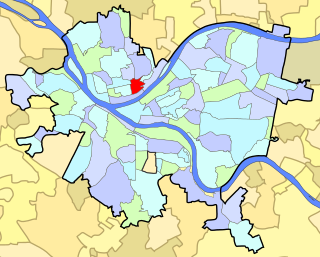
East Allegheny, also known as Deutschtown, is a neighborhood on Pittsburgh's North Side. It has a ZIP code of 15212, and has representation on Pittsburgh City Council by the council member for District 1. The Pittsburgh Bureau of Fire houses 32 engines and 32 trucks in Deutschtown.
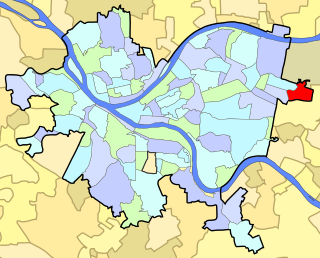
East Hills is a neighborhood in the east side of Pittsburgh, Pennsylvania, United States. Its ZIP Code is 15221. It has representation on Pittsburgh City Council by the council member for District 9.
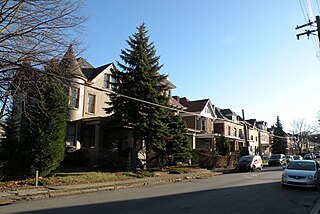
Morningside is a neighborhood in Pittsburgh, Pennsylvania's East End. It has two Zip Codes, 15201 and 15206.

Polish Hill is a neighborhood in Pittsburgh, Pennsylvania. Primarily a residential area, it is home to Pittsburgh's Immaculate Heart of Mary church.

Oakwood is a neighborhood in the West End of Pittsburgh, Pennsylvania, United States. It has a zip code of 15205, and has representation on Pittsburgh City Council by the council member for District 2.

Troy Hill is a neighborhood on Pittsburgh, Pennsylvania's North Side. It has a zip code of 15212, and has representation on Pittsburgh City Council by the council member for District 1.

Perry North is a neighborhood in Pittsburgh, Pennsylvania, USA's north city area. It lies within zip codes 15212 and 15214, and has representation on Pittsburgh City Council by the council member for District 1. The highest elevation in Pittsburgh is 1,370 feet at the Brashear Reservoir at the top of Observatory Hill. The Pittsburgh Bureau of fire houses 34 Engine in Perry North.

Paola Jo (PJ) Corso is an American fiction writer, poet, photographer and literary activist. Corso is a New York Foundation for the Arts Poetry Fellow, Sherwood Anderson Fiction Award Winner,, and included on the Pennsylvania Center for the Book's Literary Map. She is the author of eight books of fiction and poetry, including 'Vertical Bridges: Poems and Photographs of City Steps,' (2020) with original photos by the author and archival photographs from the University of Pittsburgh Library; Catina's Haircut: A Novel in Stories (2010) on Library Journal’s notable list of first novels; Giovanna's 86 Circles And Other Stories (2005), a Binghamton University's John Gardner Fiction Book Award Finalist; a book of poems, Death by Renaissance (2004), and award-winning poetry collections, The Laundress Catches Her Breath, winner of the Tillie Olsen Award for Creative Writing; and Once I Was Told the Air Was Not for Breathing (2012), about Pittsburgh steelworkers and garment workers in the Triangle Shirtwaist Factory fire and winner of a Triangle Fire Memorial Association Award.

The Steps of Cincinnati refers to roughly 400 sets of city-owned steps in Cincinnati, Ohio, in the United States. The steps are an unusual and integral mode of transportation in the city. In addition to practical use, the steps offer recreational users exercise and serve as a scenic attraction to tourists.
























